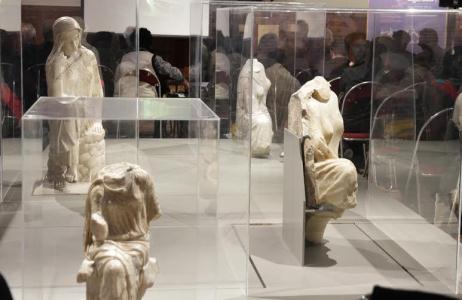The four-month “A Statue for Peace: Penelope’s Statue from Persepolis to Rome” exhibition at the National Museum of Iran ended on Sunday with a ceremony attended by the cultural attachés and ambassadors of Italy and the Vatican.
The exhibition showcased four Penelope sculptures, one of which was found in Persepolis and the other on loan from Italy. The Italian sculptures were returned home following the conclusion of the event.
The Iranian sculpture will be permanently put on display at the museum.
Earlier this year, all four statues were put on display at the Prada Foundation of Milan for four months.
The three Italian statues are the first-ever non-Iranian historical objects loaned to Iran, but they will not be the last.
“The Louvre (in France) has expressed its interest in collaborating with us in our next large exhibition,” Mohammad Hassan Talebian, cultural heritage deputy at the Iran Cultural Heritage, Handicrafts and Tourism Organization, was quoted as saying by ISNA.
Trying to avoid detail, the official said the next exhibition will be called Anahita, presumably a reference to the goddess in Persian mythology commonly known as the Queen of the Beasts. Some accounts claim she was worshipped as a fertility goddess.
Italian Ambassador to Iran Mauro Conciatori hailed the joint exhibition as a “major step toward peace in the region” and said the ending of the exhibition signals the beginning of a long cultural relationship between Iran and Italy.
In 1940, the headless sculpture of a fully-dressed woman was discovered in the ruins of Persepolis in Fars Province, believed to be that of Penelope, the wife of Odysseus in Homer’s epic poem “Odyssey”.
The life-size statue of Penelope is made of marble and historical documents suggest it was a peace offering from Greece to the erstwhile king of Persia in 450 BC.


